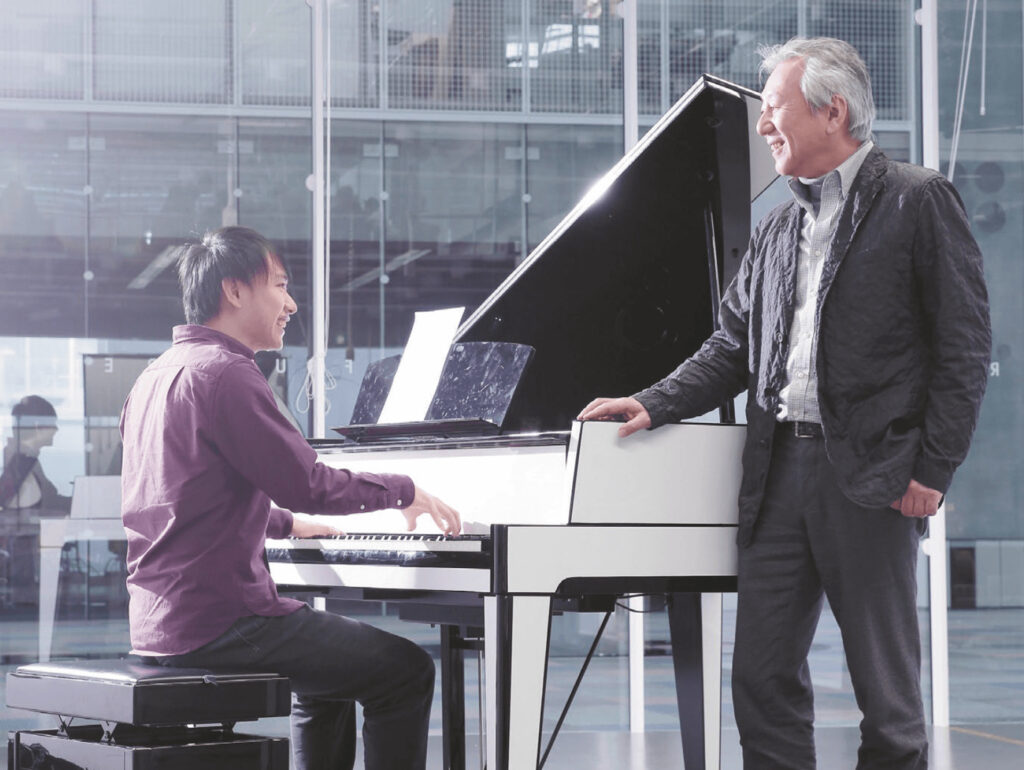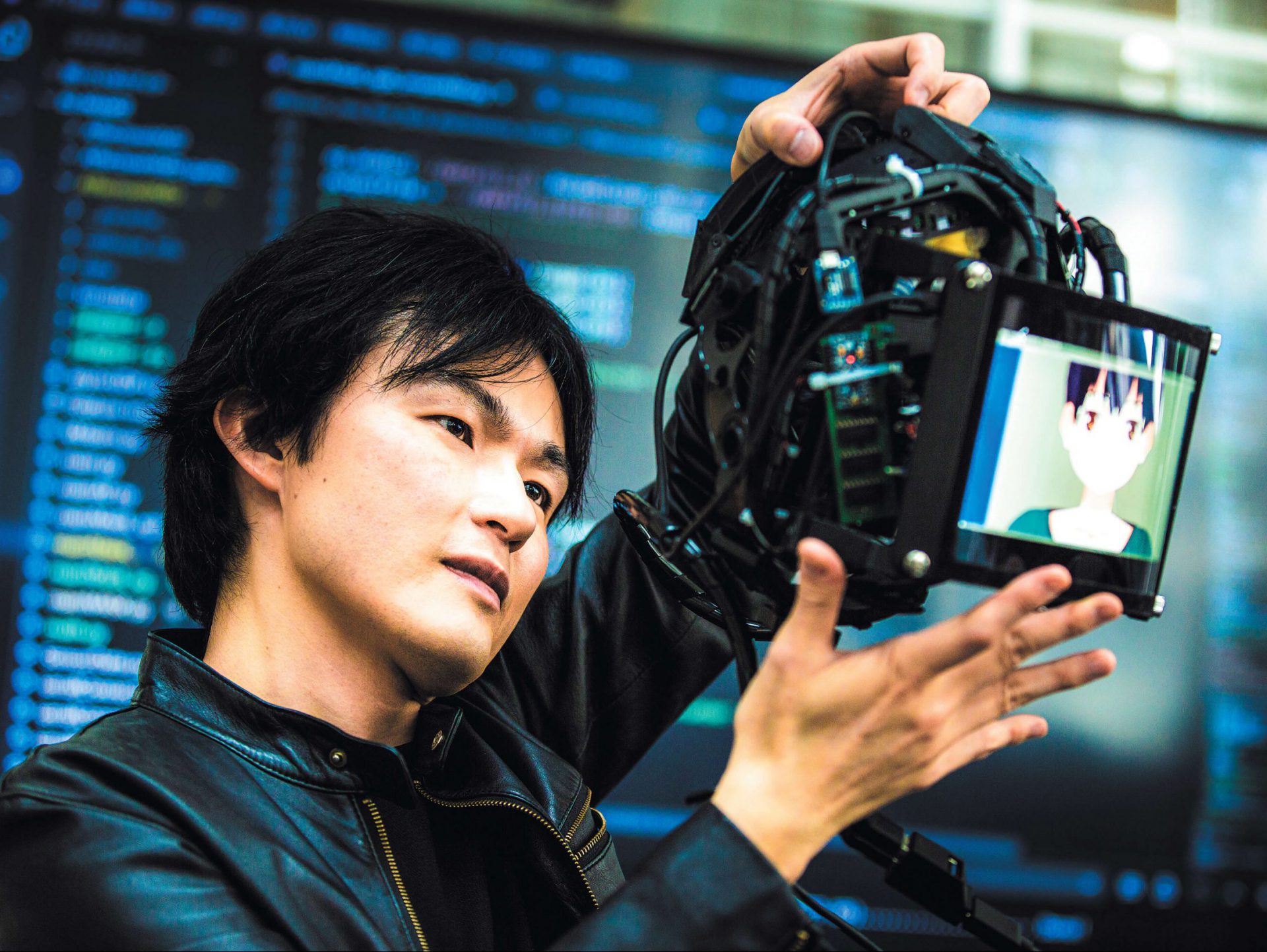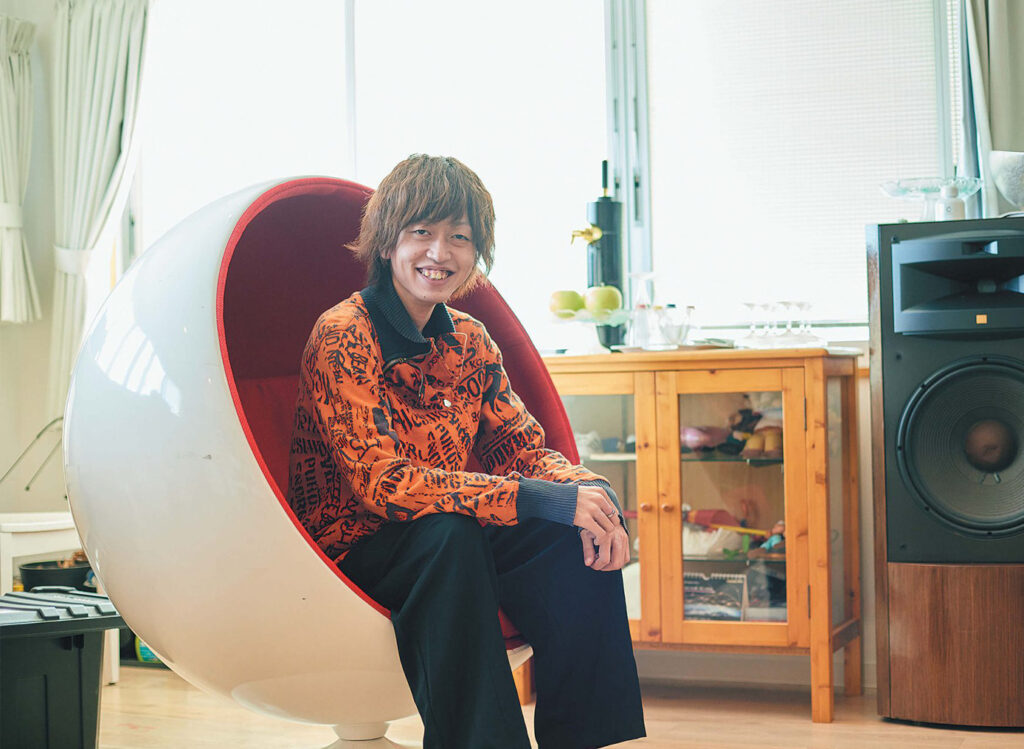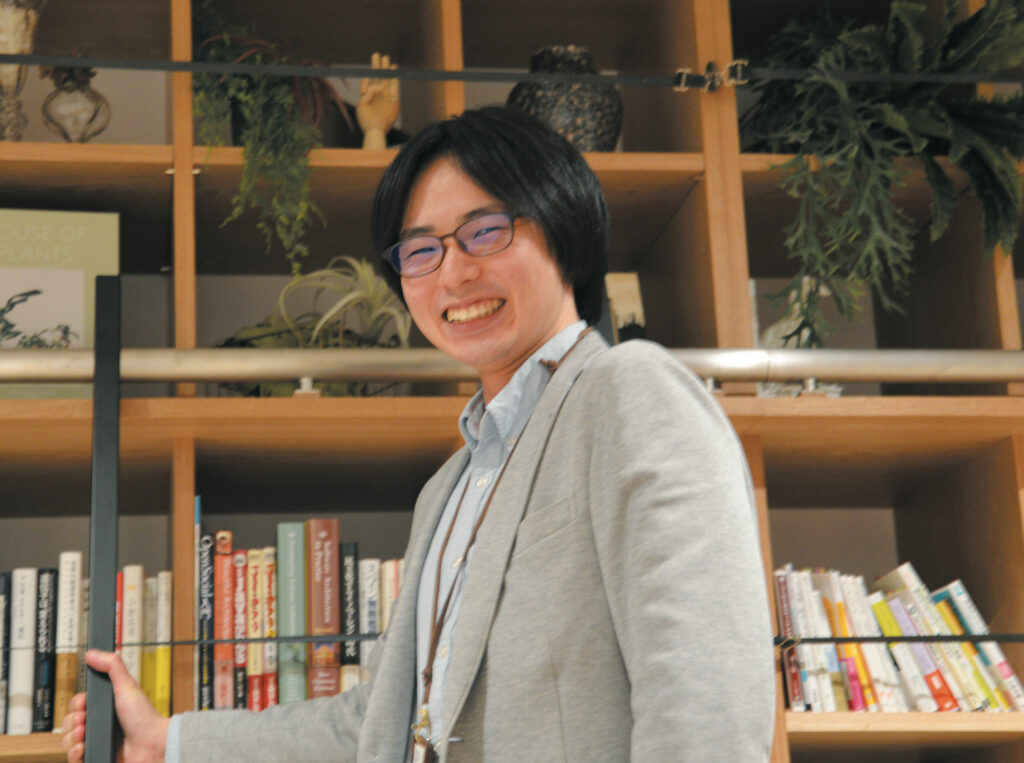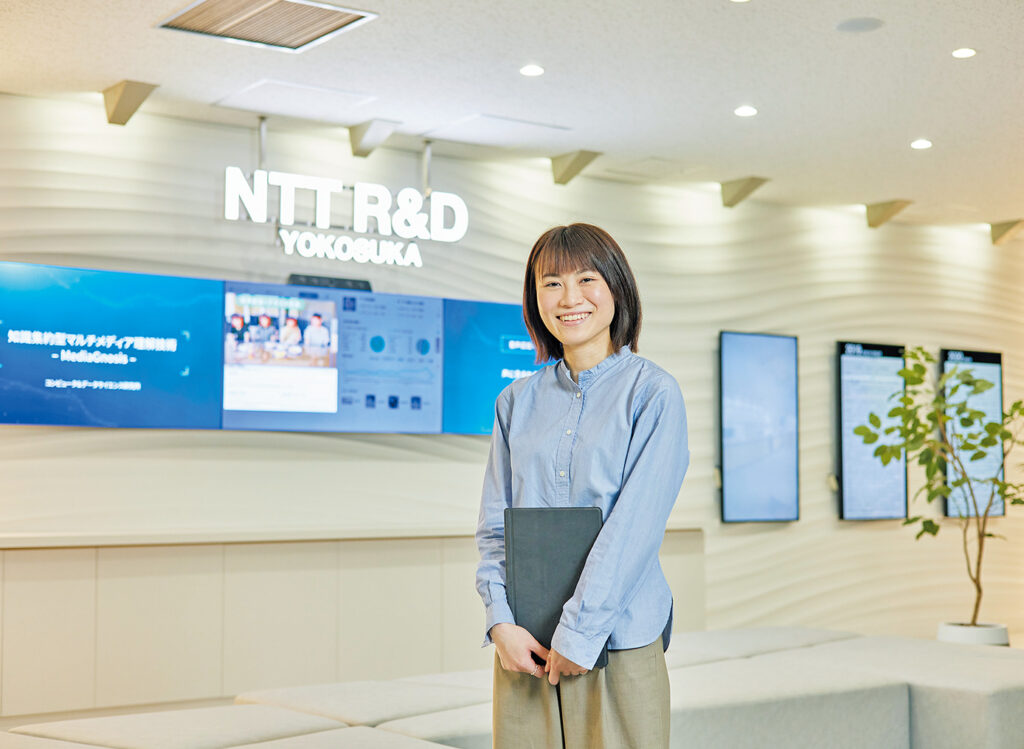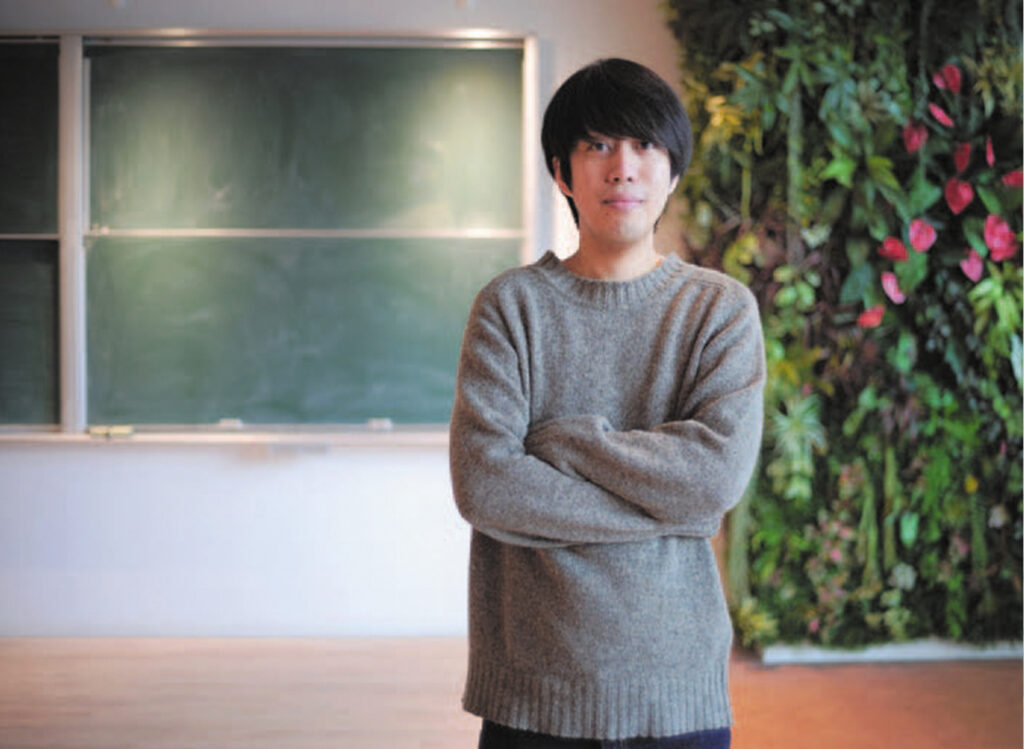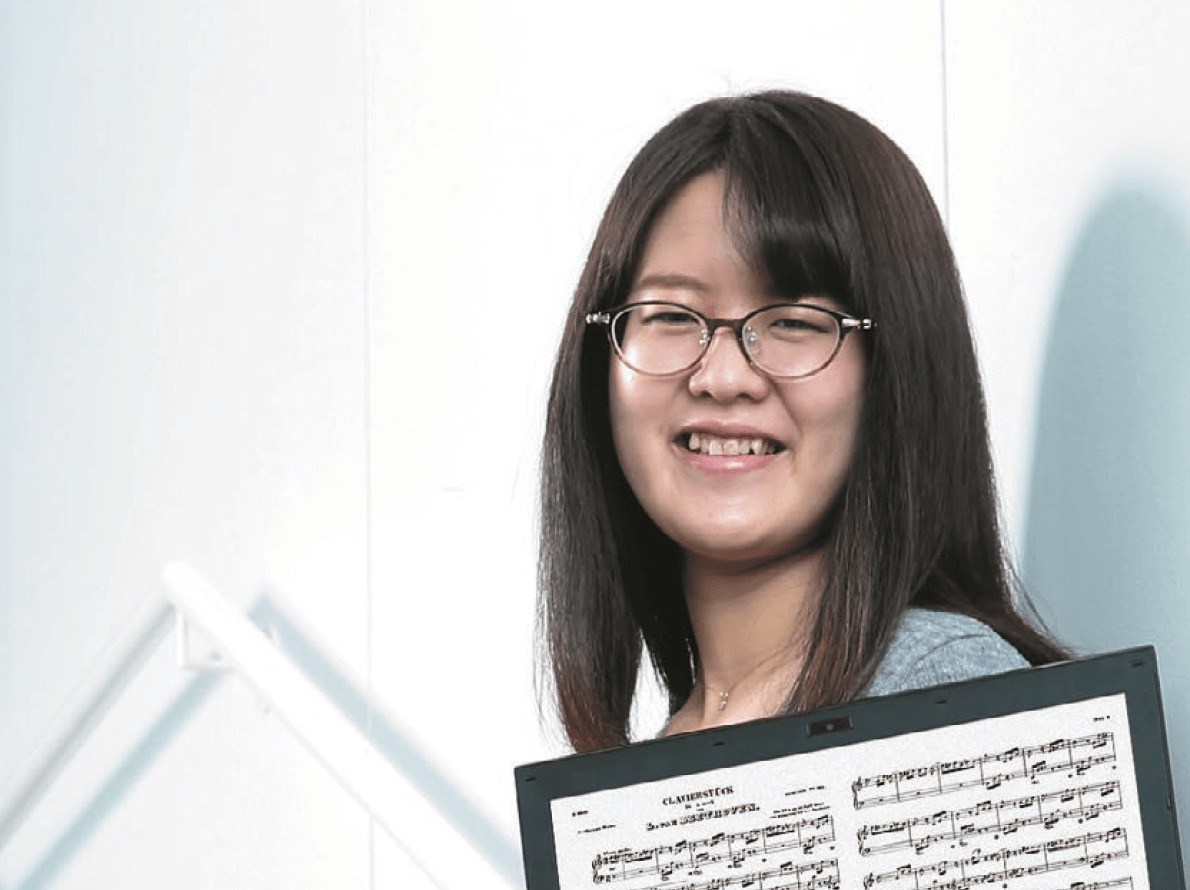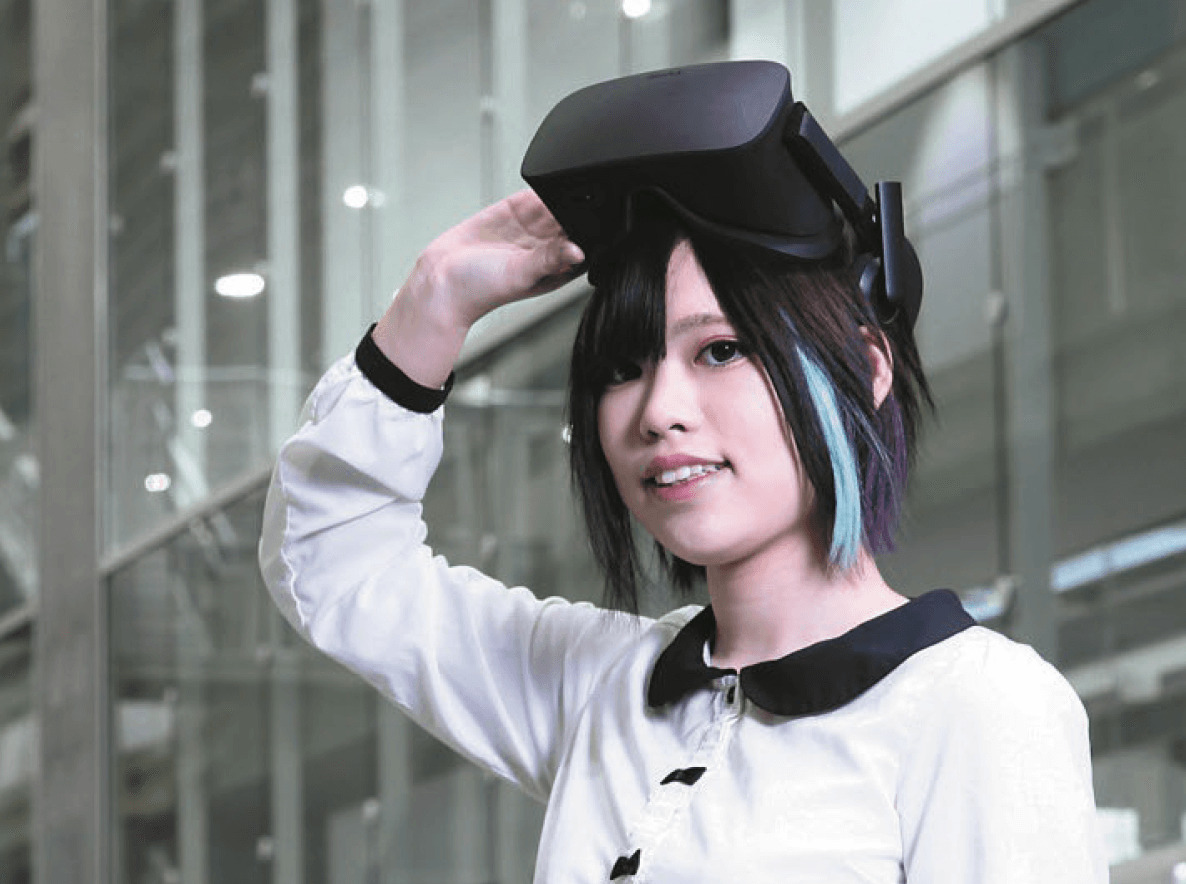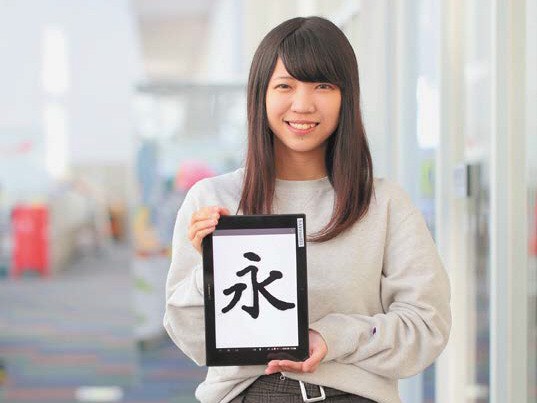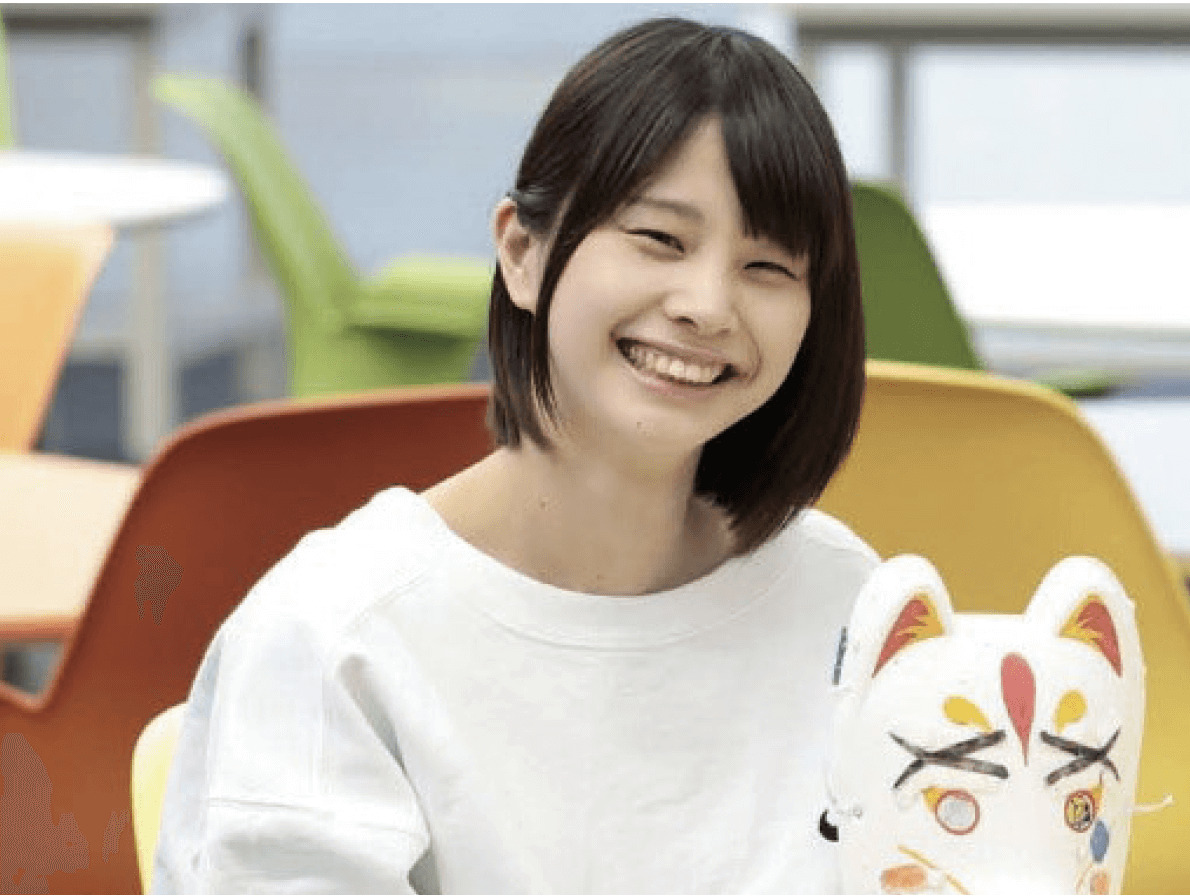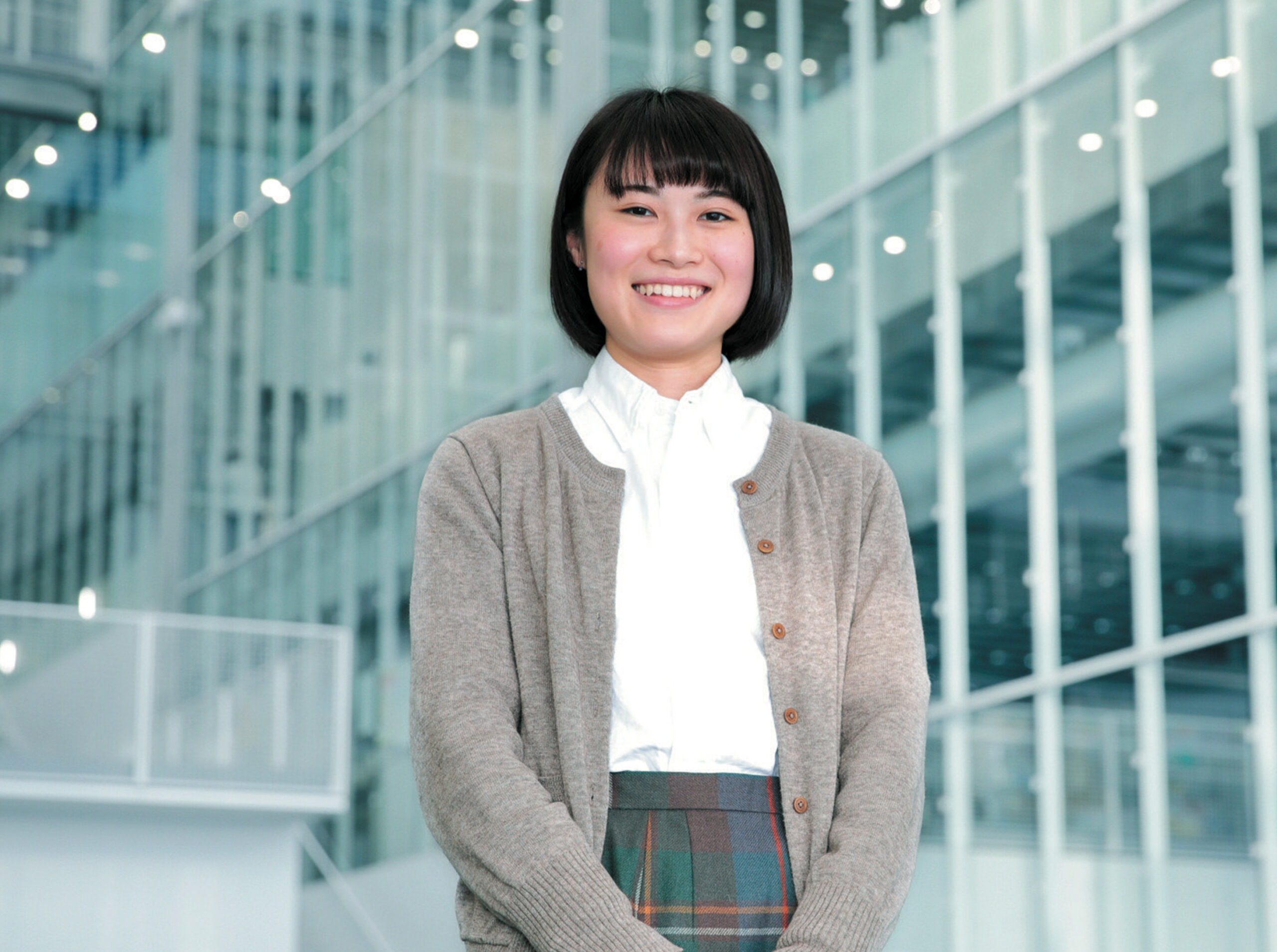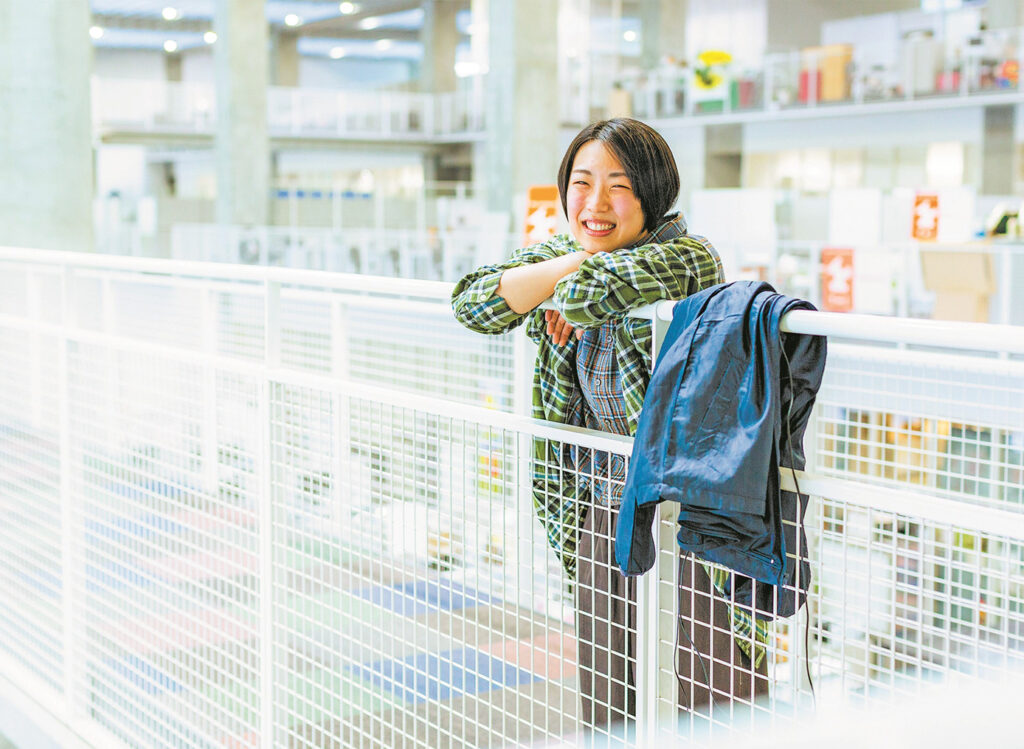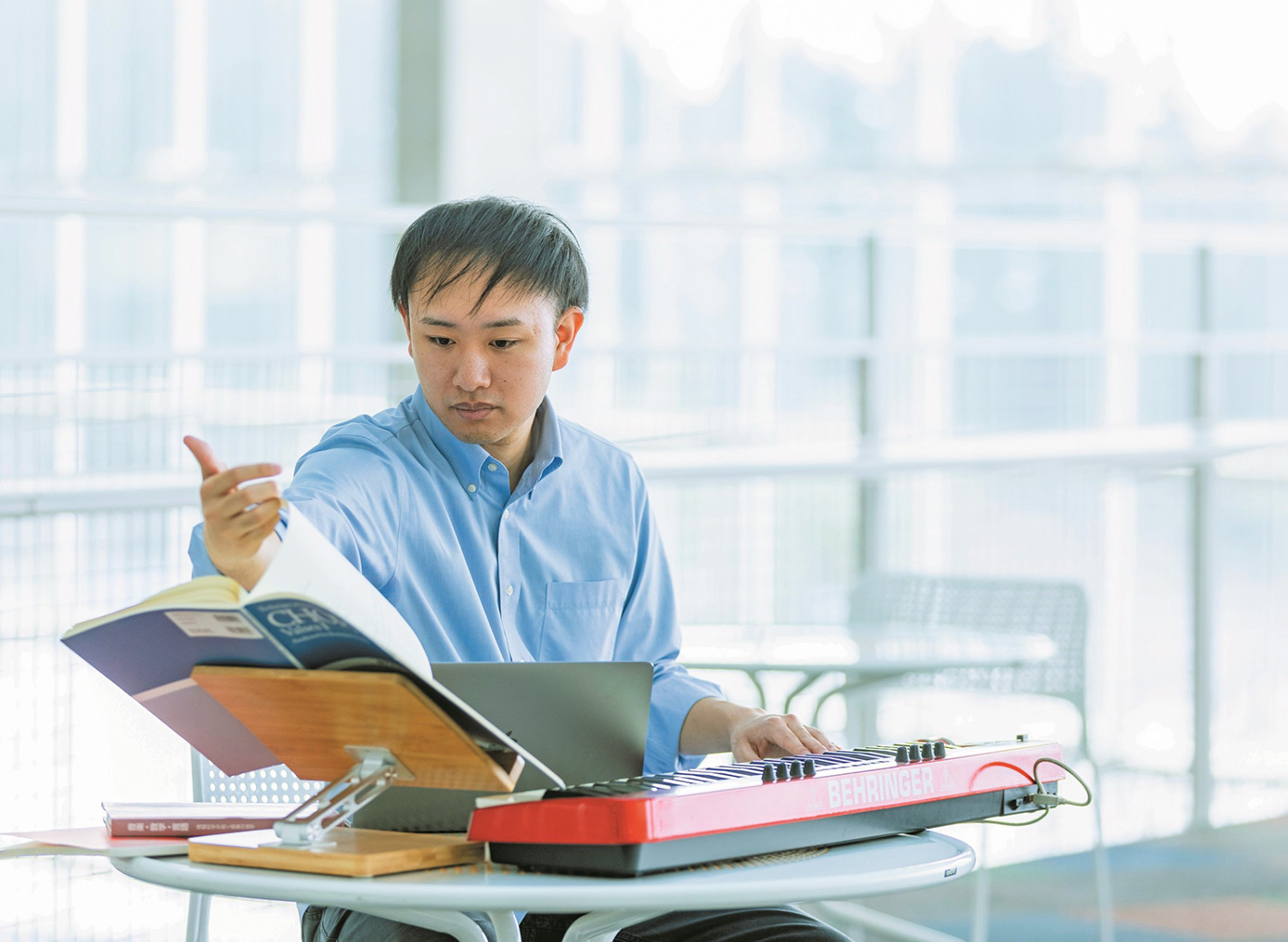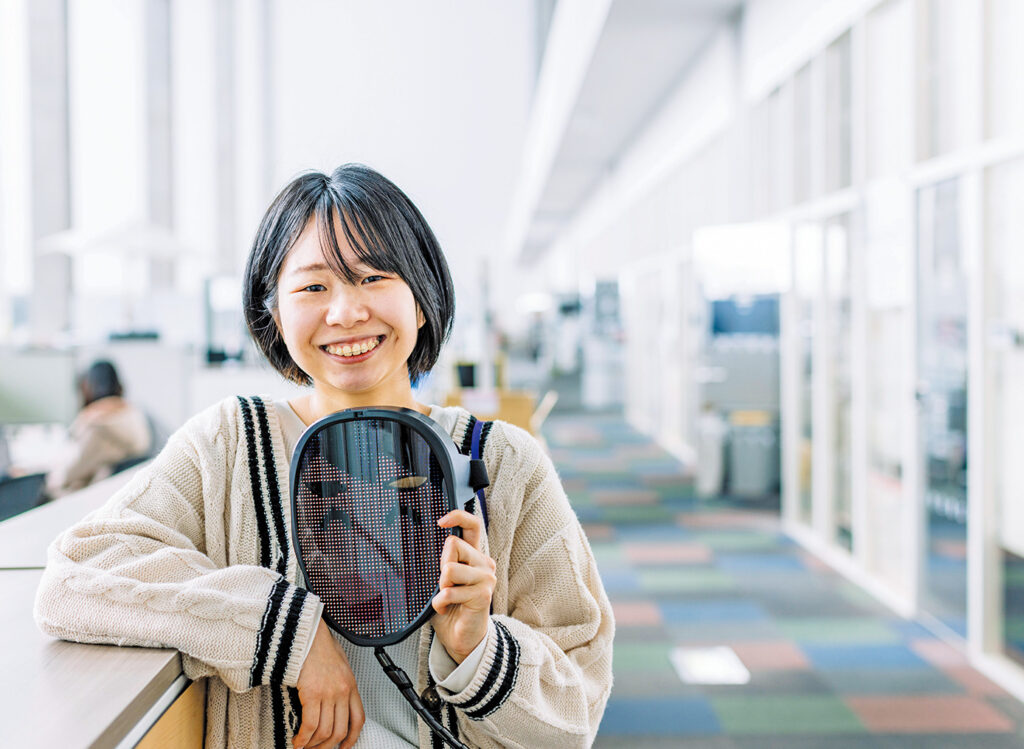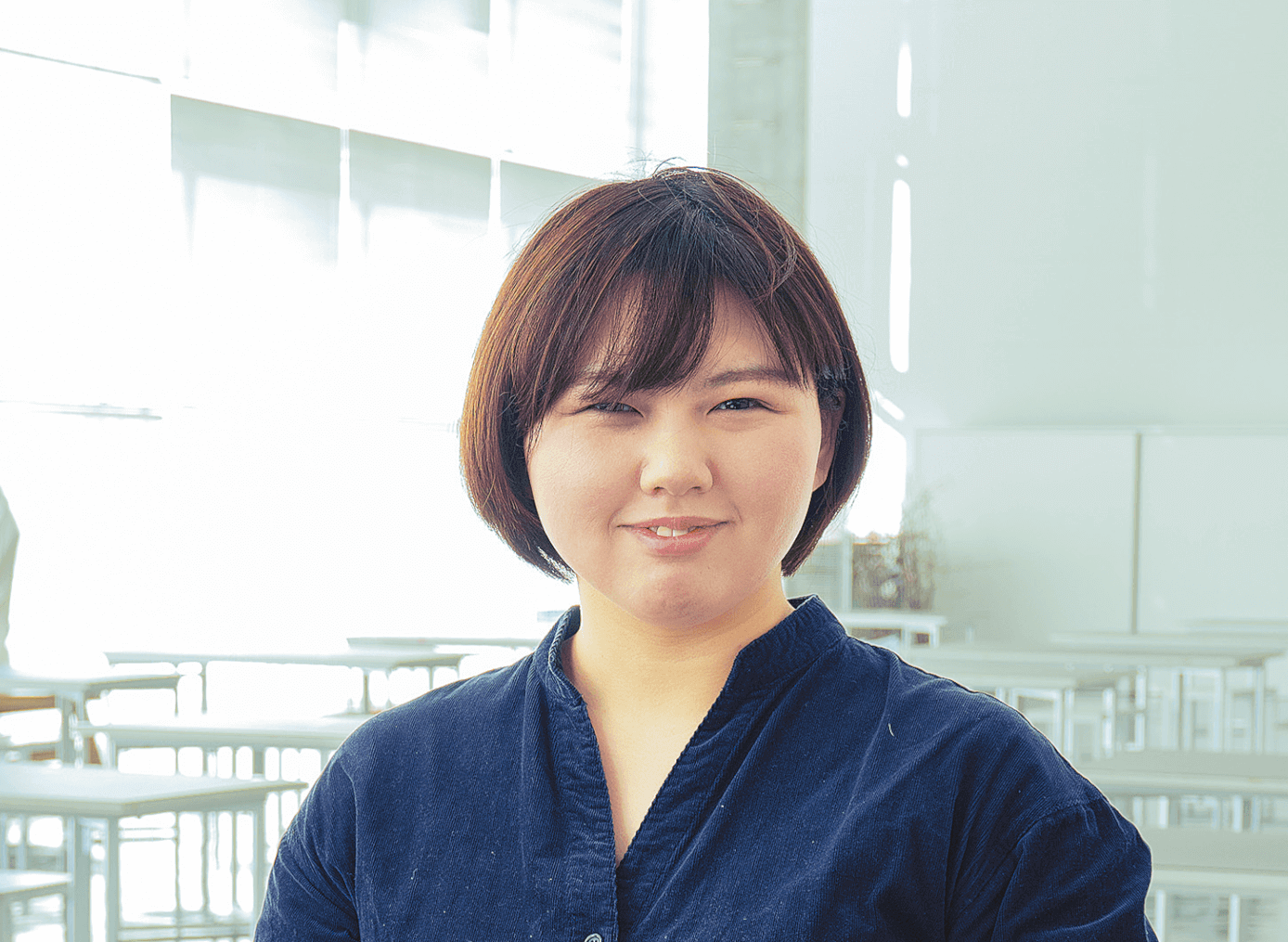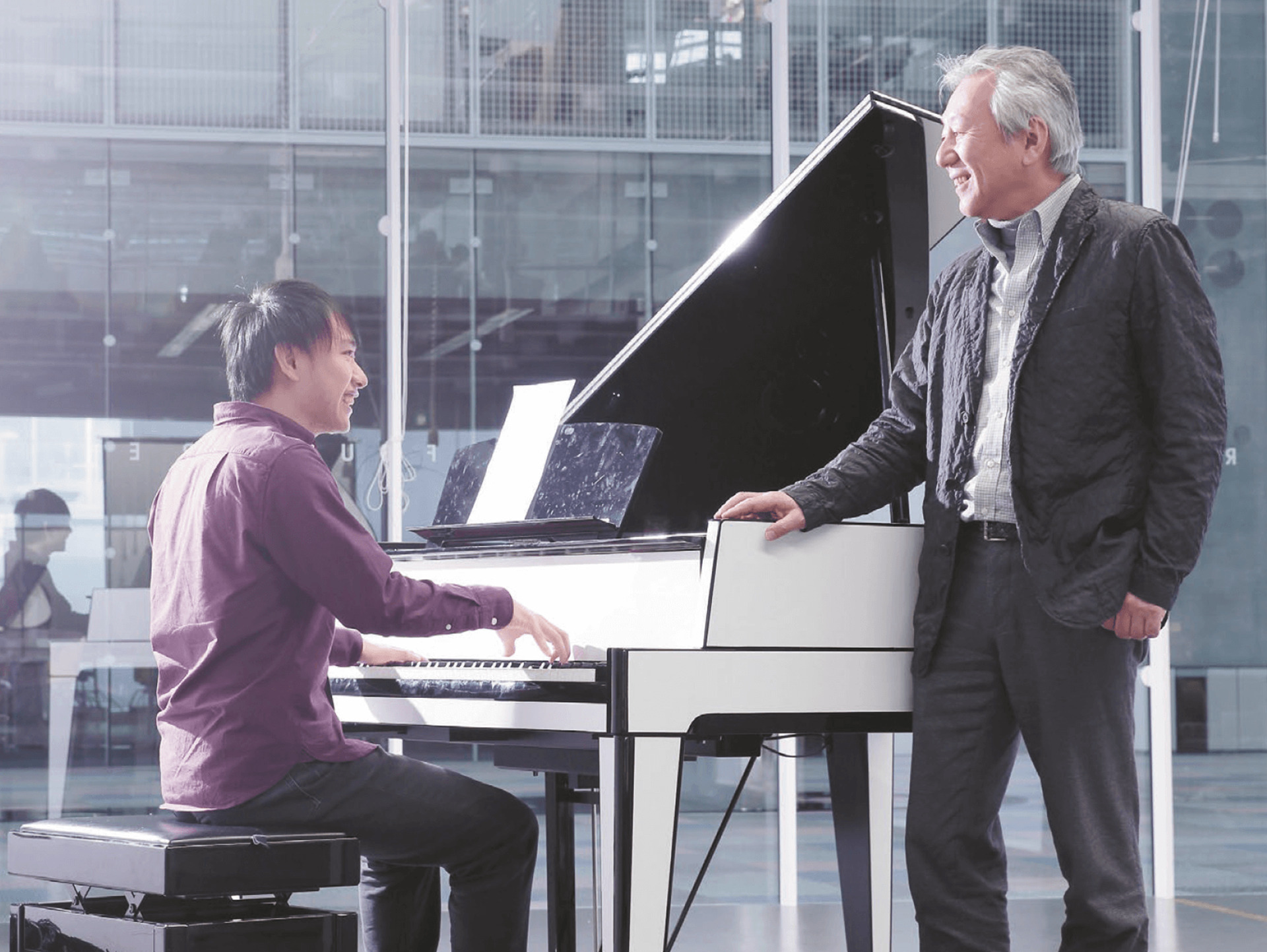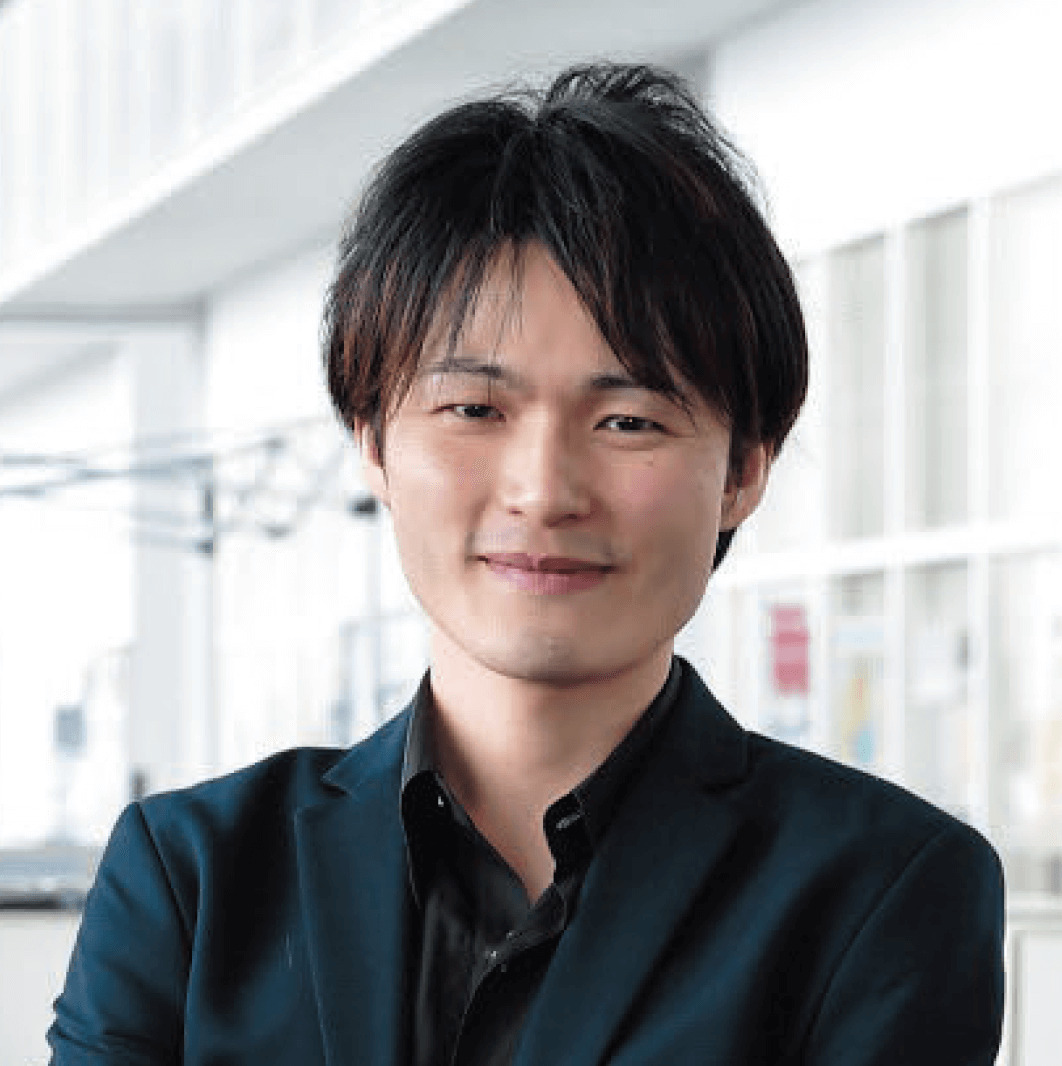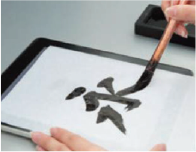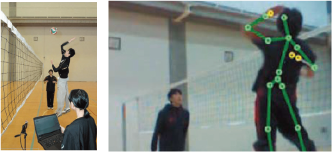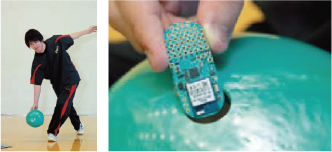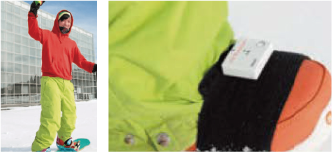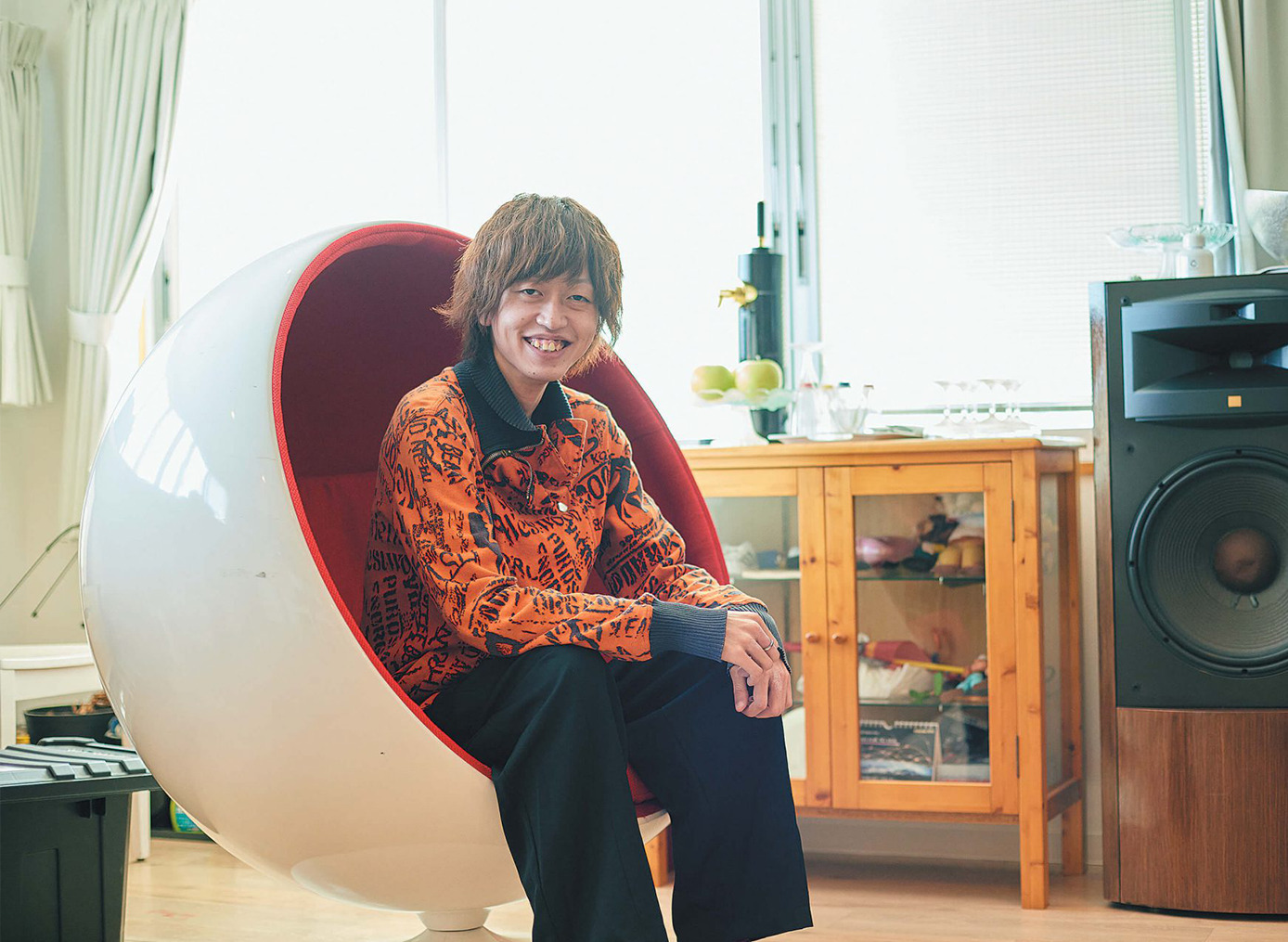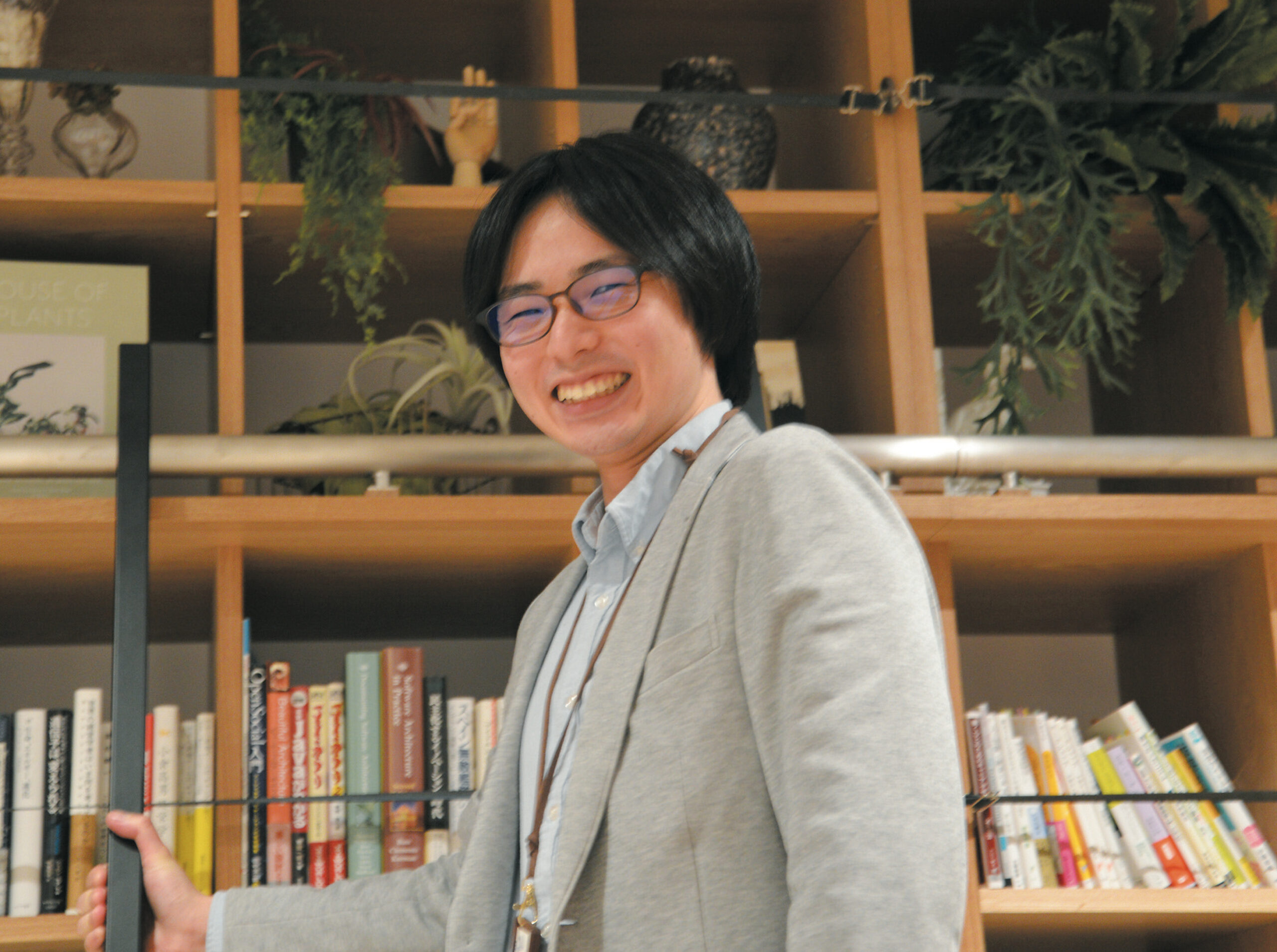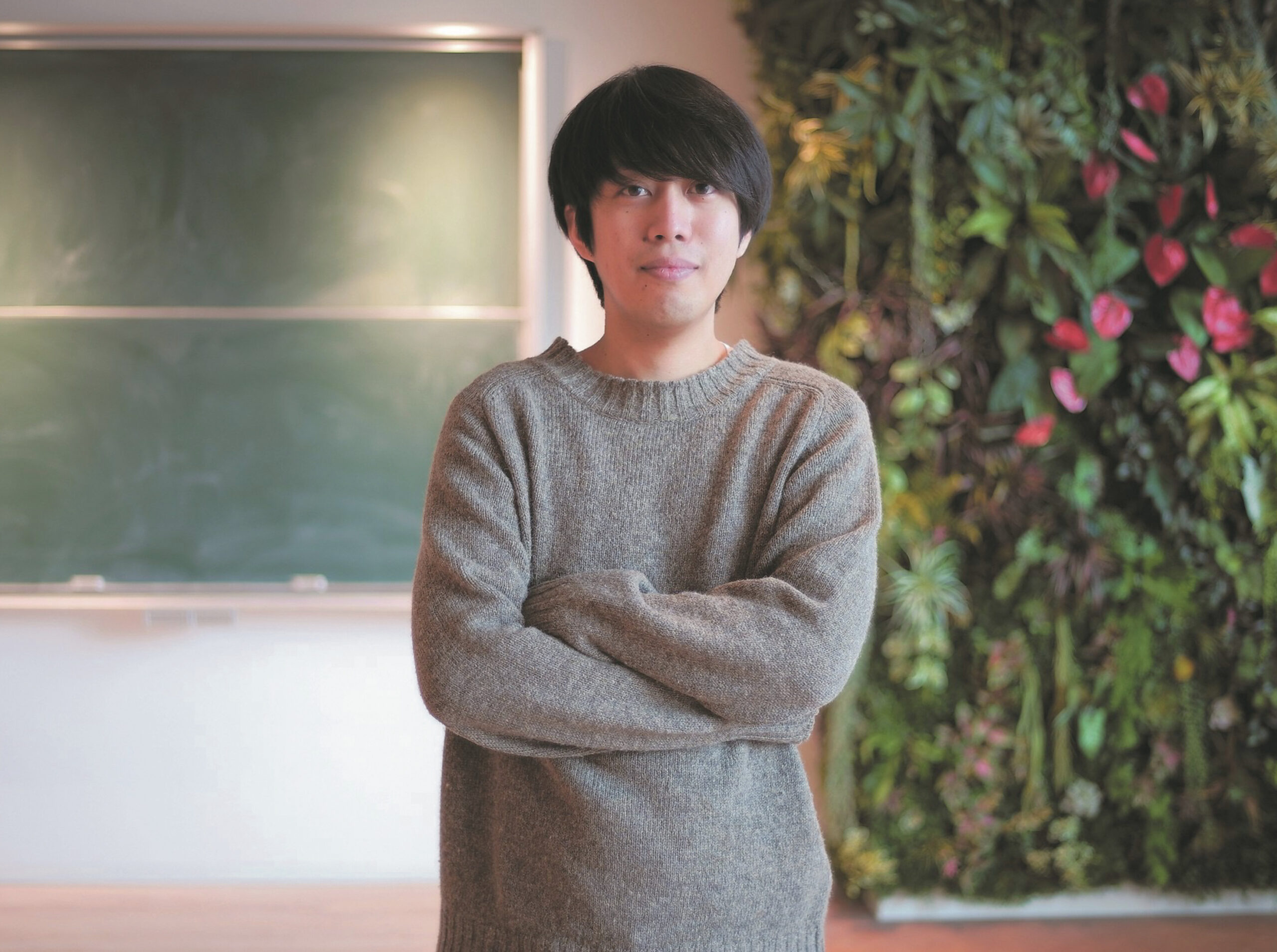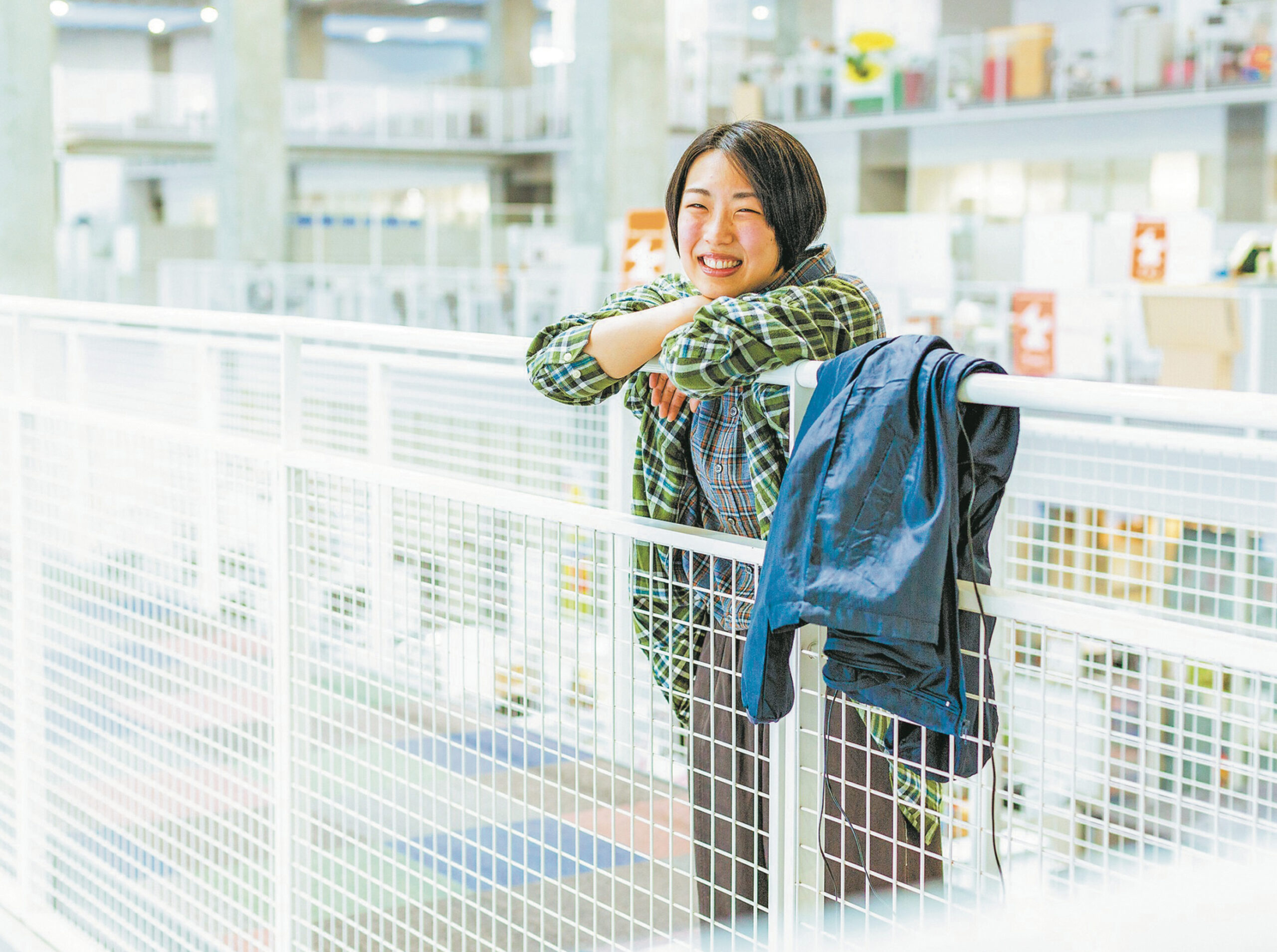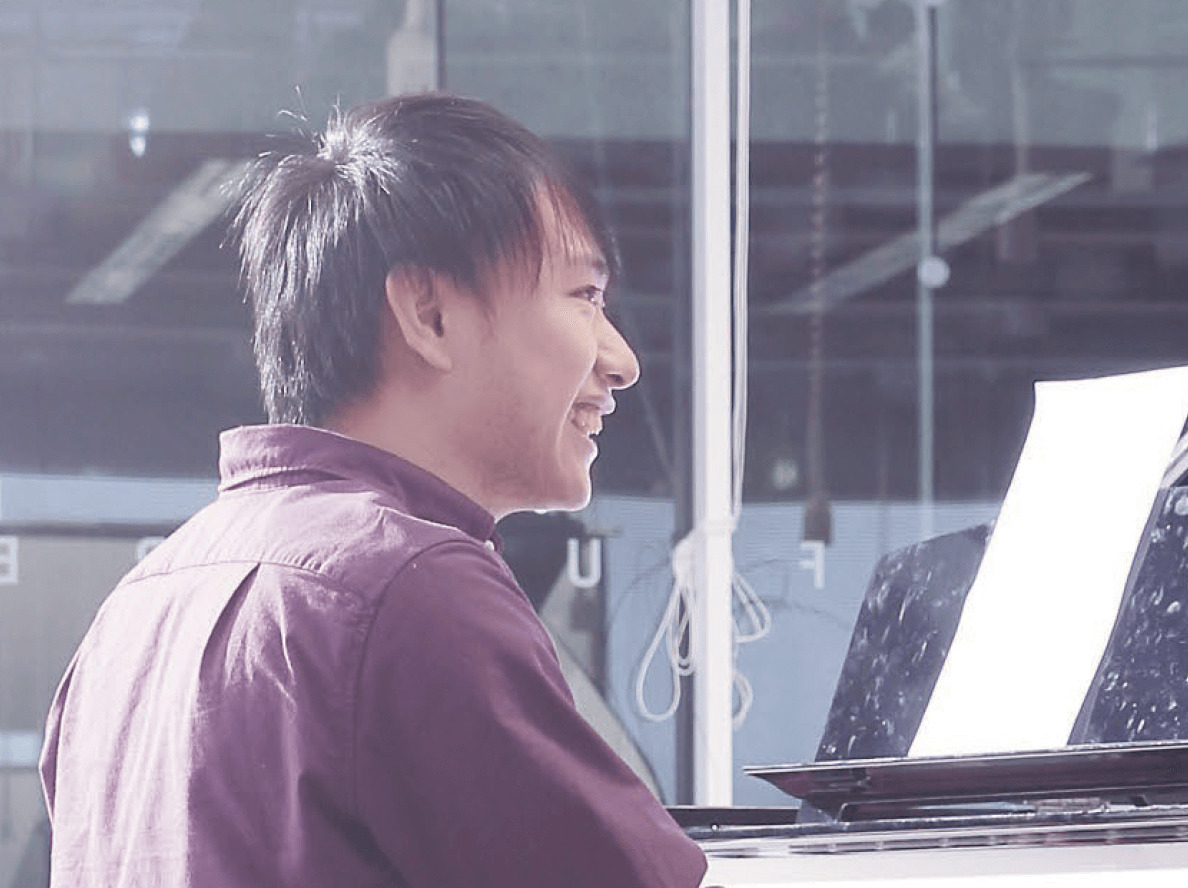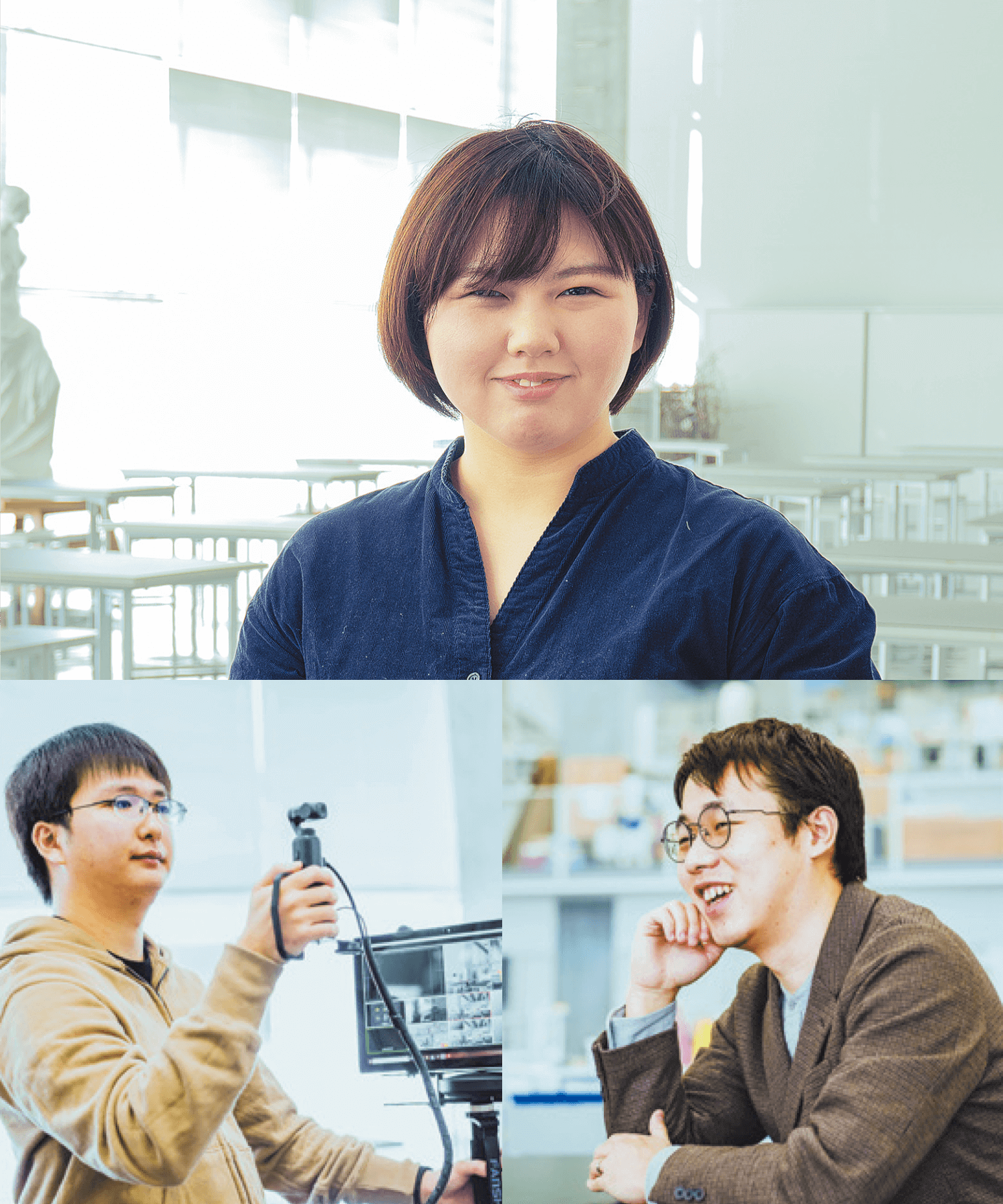Making life easier with human interfaces
Human interfaces, which are what I’m currently dedicating myself to, are the means by which humans and machines exchange information, or the equipment or software that enables this. The aim is to make life easier by having machines take care of the tasks that people find difficult. The interfaces that I’ve developed with the students from my laboratory have received a great deal of media coverage, due to their potential usefulness in the future post-corona society.
One such interface is ‘Digital Mask’. The mask, comprising a liquid crystal display, covers the entire face in the same way as the face shields that have become an essential item during the pandemic. A character is projected onto the display and the appearance of this character can be altered. The AI estimates the wearer’s facial expression, based on the data from 40 photo-reflective sensors on the underside of the mask that recognize minute movements of the facial muscles, and the expression is then reproduced by the character. Currently, the mask displays the wearer’s facial expressions in real time, but I think that it could also act as a tool to express emotion more richly, e.g., by making someone who does not often smile look happy, or by creating exaggerated expressions like in an animation.
In addition, there is also a student who is developing an application to enable smoother conversation when wearing face masks, as it can often be difficult to hear what people are saying. In this system, when the user speaks, they hear white noise, through bone conduction, from earphones worn next to the ears. As people alter the loudness of their voices according to the volume they themselves hear, the added white noise causes the user subconsciously to speak more loudly, and thus smooth communication is made possible in a stress-free manner. The impetus for the development of Digital Mask was actually the concerns of a student who felt that people often misread her facial expression. Solving people’s everyday worries in an entertaining way like this is the theme of our research. There is still room for improvement, but in ten years’ time we may see an age in which anybody can wear a digital mask and change their face just as they would change their clothes. Anyone who wants to realize their own visions and fantasies is welcome at Hirata-Takegawa Lab. Some ideas may seem almost impossible to realize at present, but won’t you join us in the excitement of considering how to approach these ideas iand create new human interfaces?

I want to give more people the joy of feeling “I did it!”
Did you have stabilizers on your bike when you were little? My research involves using IT to ‘create new stabilizers’. I’m conducting research on supporting learning by adult beginners, using those stabilizers. The learning in question is any skill that involves moving your body, be it an instrument, such as the piano, calligraphy, dance, or sport. Since the IT revolution of the late twentieth century, our lifestyles have become increasingly convenient, leading to a gradual decrease in opportunities for activity. As we face an ageing society in the twenty-first century, the era is shifting from one of ‘activity to preserve life’ to one of ‘activity to enrich the quality of life’. In awareness of this change in the type of activity we undertake, I’m working on support for ‘adult learning’, to help the countless people who have given up on learning by conventional methods. The interesting thing about this research is that any skill you are interested in, or that you can’t do but want to become able to do, can become a research theme. In my case, I have been playing the piano since I was three years old and I created a piano that assists performance with projection mapping on the keyboard. If you look at my students, their research covers a really wide range of topics, from calligraphy support using a tablet device (Figure 1), to systems that enable users to reflect on their performance, by using sensors to record actions that cannot be checked subjectively, e.g., spiking in volleyball (Figure 2), physical form when rolling a bowling ball (Figure 3), and the placement of center of gravity when turning in snowboarding (Figure 4).
Originally, there were only two options when using stabilizers: ‘remove the stabilizers or don’t remove the stabilizers’, but using IT has made it possible to ‘remove the stabilizers by stages’. There are various pitfalls in the initial stage of adult learning, because those being taught are adults with an established sense of self, meaning that they will soon grow tired of learning if the teacher/teaching system is not suited to them or the tasks are too simple, and that the practice method cannot be altered without their agreement. Therefore, I want to raise the bar of foundation learning, by introducing IT. IT will teach the things that IT is good at, while people will teach the things that people are good at. I expect that synergy will arise from this cooperation between humans and computers. The moments in my research that make me happiest are when I’m able to be present when someone, as a result of using one of the support systems my students have created, has the joy of feeling “I did it!” When I see someone develop like that, I really strongly feel how glad I am to be doing this research. From here on, I want to continue working to stop people giving up on something before they’ve really tried it, or deciding it’s impossible for them, and to produce even just one more moment of ‘I did it!’.

▲Figure ①

▲Figure ②

▲Figure ③

▲Figure ④
